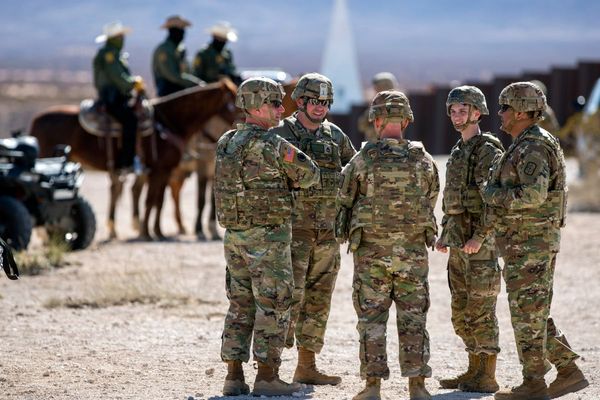
Both George Russell and Lewis Hamilton found their power units running too hot, and from early in the race they were told to adjust engines modes and their driving in an attempt to keep temperatures under control. They eventually finished in fifth and seventh positions.
Mercedes customer Williams suffered similar issues, but McLaren and Aston Martin had no problems.
Teams adjust their cooling capacity on the basis of expected race day ambient temperatures, and Allison admits that Mercedes is still trying to understand what went wrong in Bahrain.
“Well that was actually the biggest unanswered mystery from the weekend,” he said. “We were substantially hotter in the race than we expected to be.
“It's always something of a gamble choosing your cooling level for a given race weekend, because you're having to take a bet on free practice running what the weather is going to be like on a Sunday.
“And normally you're also making a few corrections for different power levels and other things that can vary between the race and when you're doing your practices.
“This particular weekend was one of the weekends where we had to make the fewest guesses possible, since we'd already run this cooling level loads of times in winter testing, and we'd already run these power levels in winter testing as well as free practice.”

Allison says that the team hit problems despite getting the ambient temperature correct.
“The temperature that we got on race day was incredibly close to what we predicted it would be,” he said. “And therefore we had all of the circumstances to make an accurate prediction for where the [PU] temperatures would be.
“The fact that we got it wrong by more than one or two degrees is extremely unusual, and quite punishing, because once the cars are above the limit that the engine guys will guarantee the engine to, we just have to back off the car.”
Allison noted that once that happens it’s hard to maintain performance, with tyres also affected.
“We have to back off the throttle at the end of the straights, we have to turn down some of the modes of the engine just to make them survive,” he said. “And that just robs you of lap time, it robs you of tyre temperature, and it just ruins your race effectively.
“So it isn't solved yet. It's one of the things that we got a programme of work this week in the factory to try to understand of the very small number of things that could possibly have changed between free practice and race, what was it that gave rise to that unexpected temperature increase?
“And it will be a considerable relief when we pin that down and make sure it doesn't then happen to us again at any point this year.”
Mercedes trackside engineer director Andrew Shovlin confirmed that the lap time loss that the drivers experienced was significant, and suggested that Russell would have held onto fourth place without the problem.
“In terms of the amount it's quite sizeable and at its very biggest, close to around three-tenths,” said Shovlin. “But then we were able to manage it effectively in other areas. And particularly with free air, the loss was a bit less than that. But of the order of one to two-tenths over the race per lap.
“Now, where would we have finished without that? Certainly, when George lost the position to Charles [Leclerc] that was one of the regions where he was having to do a lot of this management, and that lift and coast that he was doing to cool the power unit also cools the tyres.
“And he was starting to struggle a bit there with understeer, complaining about the front end. So that's one position that we would have hopefully been able to hold onto.”

Shovlin said that Hamilton would also have finished further up the order.
“The main issue for Lewis was we didn't qualify as well as we should have done,” he said. “We got a bit caught out on the first run, and ended up only having one set of new tyres for Q3. So some of his issue wasn't down to this. It was simply that he started further back.
“But with him, I'm pretty confident would have been ahead of [both] the McLarens. But probably not further than that. So as well as the cooling issue, there's a bit on tyre performance, balance.”
Hamilton suggested that such issues arise because of the lack of testing.
“We had the heating issues, stuff we didn't see, in the race,” he said. “And I think that really comes down to obviously the limited amount of testing that we have. We only have a day and a half, really, in the car.
“And back in the day, we used to have a lot of testing. And so you used to get to prove out these things, but now we have such little running. But then it also makes it exciting, because we're learning on the go.”







